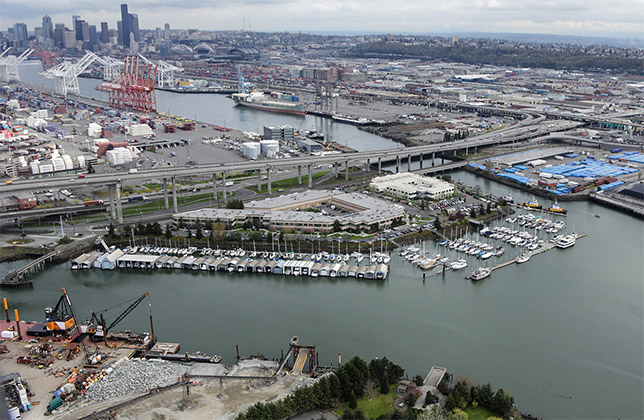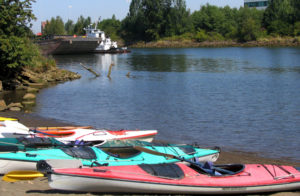The Lower Duwamish Waterway Group (LDWG) is a public-private partnership between The Boeing Company, the City of Seattle, and King County. We are committed to advancing the EPA-led cleanup of the Lower Duwamish.
LDWG supports an effective, timely, and lasting cleanup that:
- Reduces human health risks as quickly as possible under the guidance of the EPA
- Encourages participation of potential responsible parties
- Provides greater certainty around a cleanup timeframe
- Minimizes construction impacts to the community, businesses, and the environment
- Results in an effective and permanent cleanup of the waterway
- Preserves the regional economy through implementable, cost-effective, and minimally disruptive solutions
Since 2000, the Lower Duwamish Waterway Group (LDWG) partners have worked under a voluntary agreement with the U.S. Environmental Protection Agency (EPA) and the Washington State Department of Ecology (Ecology) for a coordinated investigation of the Lower Duwamish Waterway (LDW) sediments.
LDWG is committed to advancing EPA-led cleanup of contaminated sediments in the LDW. We are also working with Ecology, who is leading efforts to control sources of contamination from areas upland of the waterway.
Cleanup will enhance the health of the LDW for tribes and community members, support a more thriving economy, and provide a healthier habitat for fish and wildlife.
About the Duwamish River

The Duwamish has a rich history as Seattle’s only river, and it continues to serve as a place for culture, recreation, wildlife and commerce. The Lower Duwamish Waterway is the last five miles of river before the water flows around Harbor Island and out to Elliott Bay and Puget Sound.
The Duwamish River once ran through tidal marshes and mudflats to meet Elliott Bay, providing ideal habitat for fish, birds, and other wildlife. It has served people, too—local Native American tribes made the river their home and thrived on its natural resources. In the early 1900s, Seattle’s economy grew, and its landscapes changed. Dredging, filling, river diversion, and rechanneling supported local industries and altered the natural flow of the Duwamish to form the Lower Duwamish Waterway that exists today.

In the late 1960s, public concern led to many initiatives to mitigate these stresses. Since the 1970s, modern environmental laws and infrastructure improvements have reduced pollution sources dramatically. In 2001, the Environmental Protection Agency (EPA) listed the Lower Duwamish Waterway as a Superfund site under federal law. While the Lower Duwamish Waterway (LDW) may never return to its pre-industrialized state, much progress has been made.
Learn more about the cleanup from those leading the effort.
Debra Williston, King County Department of Natural Resources and Parks
Dave Schuchardt, Sediments Cleanup Program Manager, Seattle Public Utilities
Elly Hale, Project Manager, Environmental Protection Agency
